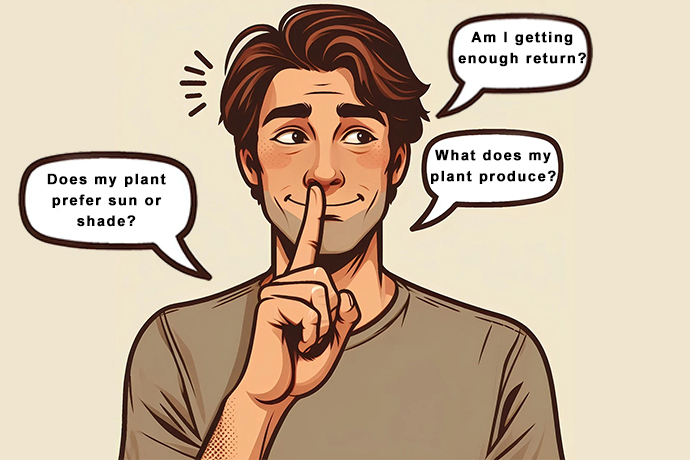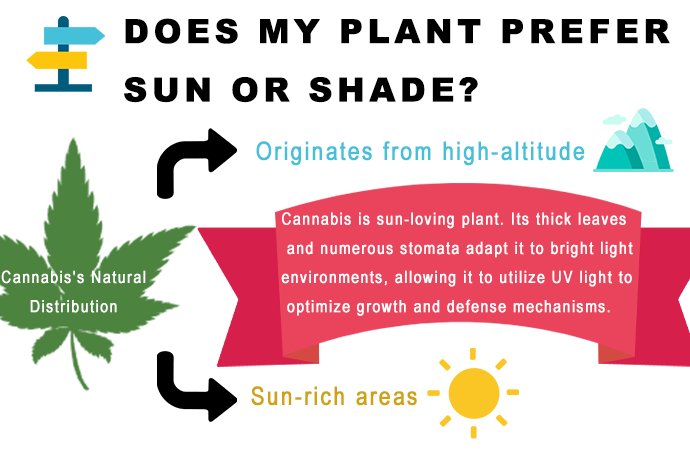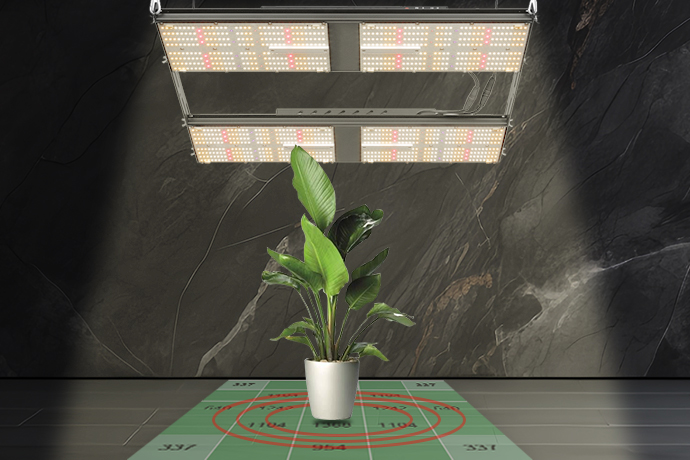Views: 126 Author: ICEVER Publish Time: 2024-12-11 Origin: ICEVER












Many people are aware of the effects of ultraviolet (UV) light on human skin and are curious about how this invisible light impacts plants. UV light is categorized into UV-A, UV-B, and UV-C, each with distinct characteristics.
So, how do they interact with plants? how much UV light do plants encounter in their natural environment? If you're growing cannabis, should you specifically add UV light for them? Does UV light make your plants stronger, or does it cause harm?
This article will explore these questions with you. From the sources of UV light to its effects on plants, and how to use UV light safely and effectively, these issues are not only about whether your plants grow healthily but also about the final quality and yield of your cultivation.
Let's first understand ultraviolet (UV) light from a daily perspective.
First, UVA: UV light with a wavelength of 400–315 nm has strong penetration, reaching deep into the dermis and also affecting melanin in the epidermis, causing skin darkening. Over time, it accumulates and becomes one of the reasons for skin aging and severe damage. Among the ultraviolet rays in sunlight, UVA accounts for 95% and has sterilizing and immune-enhancing effects.
Next, UVB: UV light with a wavelength of 320–280 nm has strong energy and can damage human skin. However, it is easily absorbed by ozone, making UVB only 5% of the ultraviolet rays in sunlight.
Finally, UVC: UVC has the highest energy but is almost completely absorbed by the ozone layer. In daily life, it is often used as germicidal lamps.
UV in everyday use primarily serves purposes like sterilization, material curing, and medical applications. For plants, UV is most commonly used for sterilizing the growing environment.
UV light sources include mercury lamps, LEDs, xenon lamps, and metal halide lamps. Among these, mercury lamps and LEDs are the most commonly used. Mercury lamps emit light using gases, while LEDs emit light through electrons. With technological advancements, LED UV is gradually replacing traditional UV because LEDs are advertised to have a longer lifespan.
However, this advertised lifespan is measured under ideal conditions. In actual usage, the chip packaging and protection of LED UV products often fail first, rendering the product ineffective. Therefore, it’s essential to consider local electricity prices, maintenance costs, and logistics costs when choosing the right product.
Plants can absorb UVB light. As a part of sunlight, UVB is a type of light that plants must naturally encounter. Plants respond to light, such as opening their stomata or growing toward light (in the case of sun-loving plants). For UV light, plants mainly respond through a mechanism known as the UV Resistance Locus 8 (Jenkins, G. I., 2014).
Since excessive UV can harm plants, the first reaction they exhibit is a defensive response. UV stimulates plants to naturally develop protective mechanisms, such as trichomes, to combat harmful light sources. This process actually enhances the plant's antioxidant capacity.
The second reaction is a synthetic response, which occurs after the defensive response. Under UV stimulation, plants can produce up to 15 types of protective substances. These proteins manifest differently across various plant species and can enhance pigmentation, aroma, specific metabolites, and disease resistance.
In daily cultivation, UV light can be used for sterilization, creating a safe environment for plants. UV also affects certain pests. However, these functions seem to primarily impact the environment rather than directly benefiting the plants themselves. So, does your plant really need UV?
Before answering this question, several factors need to be clarified:
Is the target plant sun-loving or shade-loving?
What is the product you want from your plant?
Will the return be sufficient to justify the investment?

The first question is crucial and can be determined by the type of plant, or geographical location.
If the plant typically grows in high-altitude regions or in areas exposed to ample sunlight, it is likely sun-loving. Such plants typically require a lot of sunlight and also absorb UVB light as part of photosynthesis. These plants often have thick leaves and numerous stomata to regulate water.
Conversely, if the plant typically grows in forests, canyons, or wetlands, it is likely shade-loving, such as mosses and ferns. These plants don’t require much sunlight and may suffer significant damage under UV light.
The second question helps determine whether UV supplementation is necessary. Current research indicates that UV light can increase the production of four key substances:
| Phenolic Compounds | grapes, onions, and apples |
| Terpenoids | Common in mint and cannabis, offering unique flavors and medical value |
| Alkaloids | Found in coffee, morphine, and tobacco, known for their stimulant properties |
| Glucosinolates | Known for their medicinal properties |
The third question addresses whether the additional compounds can provide sufficient return on investment.
If you are a small-scale grower using a grow tent or indoor setup with limited lights, UV may be worth considering. However, for large-scale growers, this becomes a more complex issue. Both LED and HPS UV lights require additional purchases, replacements, and operational costs. Since UV improves product quality rather than yield, calculating whether the cost of UV usage is justified is critical.
Compared to other light spectra, UV is more expensive, and it’s not worth the investment if it doesn’t improve income. Fortunately, the price of UV systems has been decreasing, offering more options for consumers and allowing more crops to benefit from UV for enhanced product quality.
Calculating the return on investment (ROI) of UV systems based on the market value and economic benefit of your target crop is essential.
Hopefully, these considerations help you decide whether to add UV to your cultivation setup. Seek advice from the internet or experts to gain more insight into your specific plants.



The primary purposes of using UV light are:
To increase the production of specific compounds, as discussed earlier.
To sterilize the growing environment, making it cleaner.
Thus, the disadvantages of UV use will also be based on these two scenarios.
Impact on humans
When using UV light, it can "burn" the human eyes. In the short term, it may cause eye pain, tearing, and blurred vision. Prolonged exposure can cause irreversible damage to the lens and retina.
UV can also "burn" human skin, leading to symptoms similar to sunburn. Long-term exposure may even induce skin cancer.
Impact on plants
 The leaves are essentially the "skin" of plants, and UV light can similarly "burn" them. According to a simple scientific experiment, a UV point light source was placed in a test area above a sun-loving plant. Due to the characteristics of the light source, the light intensity was distributed as follows: the center had the highest PPFD, decreasing outward; the higher the position, the higher the PPFD. Although the experiment may not be absolutely rigorous, using the PPFD array as a standard, it provides insight into the effects of UV intensity on plants.
The leaves are essentially the "skin" of plants, and UV light can similarly "burn" them. According to a simple scientific experiment, a UV point light source was placed in a test area above a sun-loving plant. Due to the characteristics of the light source, the light intensity was distributed as follows: the center had the highest PPFD, decreasing outward; the higher the position, the higher the PPFD. Although the experiment may not be absolutely rigorous, using the PPFD array as a standard, it provides insight into the effects of UV intensity on plants.
The experiment showed that under prolonged exposure, leaves in the area with the strongest UV (center) turned yellowish-brown, withered, and even fell off. Outer leaves exhibited "spots," signs of damage to the leaves.
(PPFD - Photosynthetic Photon Flux Density: the amount of light photons received by a plane in a specific height and time)
Conclusion: Use with caution! UV is more like the icing on the cake. If you are satisfied with the current state of your plants, there is no need to add UV. Incorrect usage can harm plants, so UV is more suitable for professional growers looking to improve product quality.
after the considerations above, you still decide to add UV light, there are some practical issues you must address:
How can you properly adjust the UV lamp to avoid harm to both plants and humans?
Professional growers should make adjustments with proper protection in place. While detailed PPFD adjustments cannot be fully explained in this article, the core principle is: the center has the highest PPFD, decreasing outward; the higher the placement, the higher the PPFD, much like a target. You need to constantly adjust the height, angle, and intensity of the grow light to find the most suitable setup.
After setting the PPFD, you must also establish a lighting cycle for your plants. This requires analysis based on the specific plant type and even its growth stage. Like humans, plants also need rest, and a regular "work schedule" improves their efficiency. During this process, you can choose grow lights with a timer function to avoid frequent manual adjustments. Home growers can select products with remote control features, allowing them to monitor and manage their plants even when away from home.
Does placing the UV light source in the middle to ensure even distribution conflict with your other grow lights?
For home growers, space for plants is often more critical than additional tools. Therefore, you should choose grow lights of suitable size to accommodate your setup.
Can you afford the replacement costs of UV lights?
Due to its unique properties, UV lights generally have a shorter lifespan than other types of grow lights, regardless of whether they are LED or traditional UV lamps. While LEDs have the longest lifespan compared to other types, the packaging materials of LEDs can also degrade quickly, making them more susceptible to external damage. Therefore, replacements will still be necessary. The replacement frequency depends on how you use the lights, their operational frequency, and whether you clean them regularly.
These are very realistic issues that must be addressed. Hopefully, this article has helped you decide whether adding UV is right for you—or led you to abandon the idea altogether.
Where light grows, so does knowledge. Hope everyone is inspired by our sharing!
